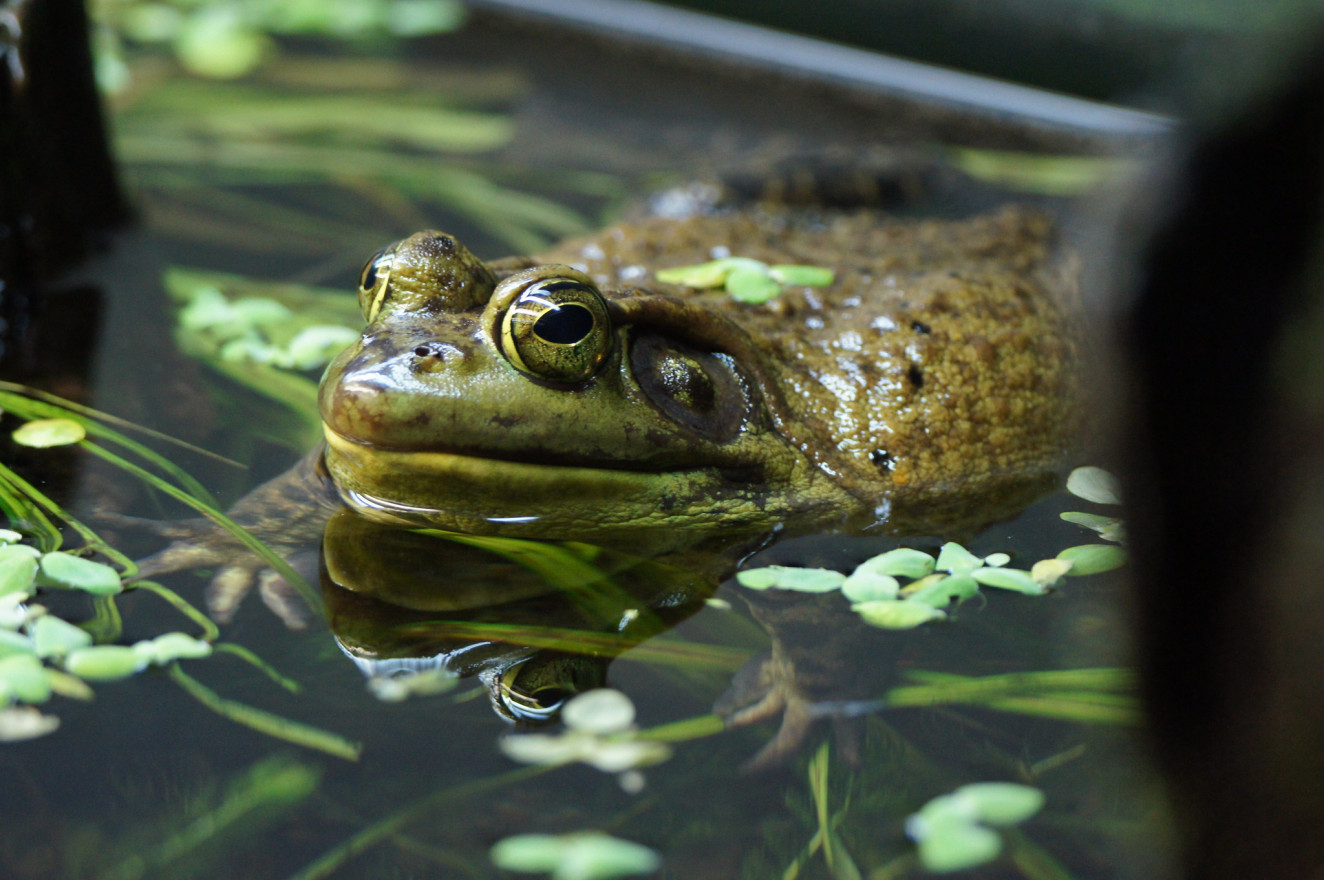Skin-eating fungus is annihilating the world’s amphibians
With anticipation, biologist Karen Lips crept out of her cramped wooden hut perched atop a mountain. She journeyed into the heart of the rainforest, traipsing through carpets of vegetation. Moonlight peeked through the shelter of hundred-foot trees. The air was heavy, inundated with moisture from the clouds. It’s the middle of the night, but the jungle is alive.
Lips was camped out in the Costa Rica rainforest, alone, for a year and a half. Her shack was nestled in a remote village atop a mountain bordering Panama. Each night, she plucked every frog she spotted up from the jungle’s tapestry of flora and swabbed them.
“You’re walking down this beautiful trail, and you hear the birds and see a hummingbird sleeping on the branches. And you look up and there’s a frog sitting on a leaf, and you walk over there, and you pluck it off the leaf,” Lips says.
That was in 1993. When Lips returned just three years later, she couldn’t hear the croaking of toads or frogs splashing in streams. Their environment was “dead silent.” Lips noticed that the number of frogs in the region was down 90% by 1996. Initially, Lips blamed everything, from her headlamp to the weather. But when she spotted dead frogs everywhere, she sensed she was front-row to the world’s next environmental calamity.
Lips shipped 50 lifeless frogs back to a veterinary pathologist in Maryland who confirmed her greatest fear… thousands of frogs were dying at the hands of a mysterious killer.
A viral villain
It wasn’t until the late 1990s when researchers like Lips discovered that frogs in Australia and Panama were dying by the masses. The silent killer wasn’t an elusive predator or a toxic food source. Rather, a virulent fungus was swiftly eradicating species in one fell swoop. Amphibians were dying at the hand of Batrachochytrium dendrobatidis.
The fungus—called Bd for short—is so lethal because it invades amphibians’ porous skin, which the animals use to breathe and drink water. The viral villain destroys the skin’s proteins and devours the remaining amino acids. Infected animals become lethargic and experience organ failure in a matter of weeks.
Like the most vicious of diseases, Bd doesn’t play favorites: it annihilates frogs young and old, wiping out amphibians across the globe. Some amphibians can resist or tolerate Bd, but 695 species are vulnerable. And 90 species already have disappeared, while 500 others have sunk into a steep decline, with few projected to recover.
“It’s so widespread. It’s not specialized or anything. It’s huge, it’s just a terrible generalist disease. And that’s what makes it terribly lethal,” Lips says.
Stopping Bd’s killing spree
After her bombshell discovery, Lips dove headfirst into understanding and advocating for “one of the largest losses of biodiversity.” In the 25 years since, Bd’s killing spree hasn’t slowed down, and neither has Lips.
“There’s so many ways to think about Karen and all the different things she’s done. I think one is her curiosity, and her ability to just persist, that she cared so much about this,” says Margaret Krebs, who led a leadership academy with Lips.
Lips tracked the global spread across six continents to find that human activity is pushing an amphibian death wish to all corners of the earth. The amphibian meat and pet industries allow Bd to travel, leaping off of the back of one frog to the next.
Though the virus poses no direct health threat to humans, the global destruction of frogs has devastating consequences. A decrease in the frog population causes an uptick in insects like flies and mosquitoes, who spread deadly diseases including malaria and pose a danger to human health.
“There are indirect effects on human health… As soon as the frogs disappeared, there’s about a 10-year increase in the number of malaria cases in Costa Rica and Panama,” Lips says.
Currently, wild populations raging with Bd cannot be cured on a global scale. For now, researchers say that the best step is to prevent the fungi’s further spread. In 2009, Lips left the South American rainforest for the bureaucratic jungle to promote policy that would prevent the further spread of Bd.
“Because she saw her study and research sites destroyed by this disease, she realized she was going to have to jump in and get her hands dirty in the policy world to try to deal with it,” says Peter Jenkins, an environmental lawyer who petitioned government agencies alongside Lips for preventing the import of infected amphibians who might bring Bd.
Bd is already present in the United States, and the U.S. Fish and Wildlife Service is actively monitoring its spread. Yet, in March 2017, the agency ceased consideration of a 2009 petition to ban all amphibian imports unless they were Bd-free.
Lips argues that although Bd is already in the United States, other harmful variants could make their way into the country without the proper testing that is not presently in place. Studies show that the even deadlier African and Brazilian strains of Bd could hybridize with the original Bd strain.
In 2013, researchers identified B. salamandrivorans, known as Bsal. Its name aptly translates to “salamander-devouring,” as from 2009 to 2012 the fungus eliminated Dutch fire salamander populations by more than 99%. A 2016 ruling banned the import of 201 salamander species. However, if the Bsal-infected species were already in the U.S. before the ban went into effect, interstate transport of the species is legal.
Salamanders are indicator species, the frontline voice to determine if an environmental catastrophe is looming. Often referred to as a “canary in a coal mine,” they serve as an early warning system for an ecological decline that will inevitably impact humans. Spotting a two-lined salamander living under a rock at a stream is a sign of good water quality. The absence of woodland salamanders in a forest is an ill omen.
“(North America) has more families, more species of salamanders than anywhere else in the world. We safeguard the salamanders of the planet,” Lips says. “And so if this salamander chytrid gets here, we’re going to expect to see massive infections, die-offs, and impacts just like we saw with Bd.”



















